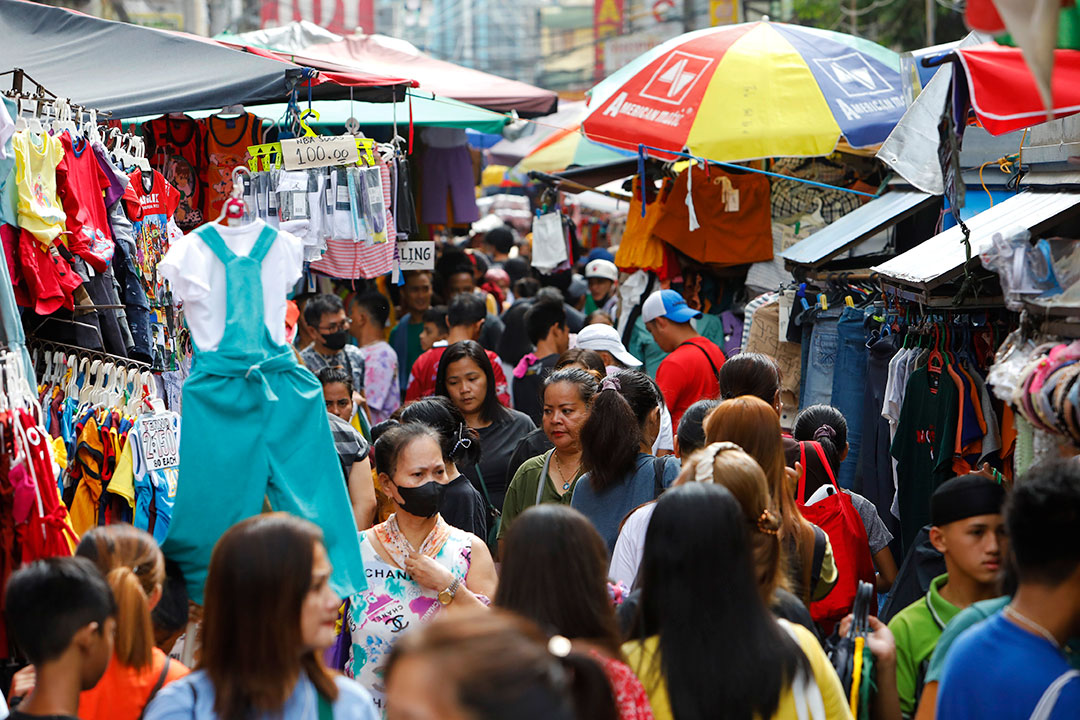




Philippines Trade Update: Trade trajectories trend along
 DOWNLOAD
DOWNLOAD

Policy Rate Updates: Double cut finale
 DOWNLOAD
DOWNLOAD

Monthly Economic Update: One for the road
 DOWNLOAD
DOWNLOAD


Rates to stay ‘higher for longer’ — BSP

The Bangko Sentral ng Pilipinas (BSP) is unlikely to start policy easing in the next few months and will only consider cutting rates if inflation settles at the midpoint of the 2-4% target, its governor said on Wednesday.
“We’re unlikely to cut rates in the next few months. We’re in a higher for longer (scenario). When I say hawkish, that basically means high for a while,” BSP Governor Eli M. Remolona, Jr. told reporters.
The Monetary Board last week kept its benchmark rate at a 16-year high of 6.5% for a second straight meeting. Interest rates on the overnight deposit and lending facilities were also left unchanged at 6% and 7%, respectively.
From May 2022 to October this year, the BSP raised borrowing costs by a cumulative 450 bps to tame inflation.
Mr. Remolona said policy easing will only be considered if inflation expectations are within a “comfortable” range.
“If most of the numbers point in the right direction, including expectations, if they really settle into this comfortable range of 3% for inflation, then we would consider cutting rates,” he said.
“If inflation remains higher than we thought and expectations begin to get de-anchored, then we have to do more about inflation. On the other hand… if inflation continues on its path and the expectations should be well-anchored, then we will start to consider easing,” he added.
Headline inflation slowed to 4.1% in November, bringing the 11-month inflation average to 6.2%. November marked the 20th straight month that inflation breached the BSP’s 2-4% target band for this year.
The central bank expects inflation to average 6% this year.
For 2024, Mr. Remolona said inflation will likely hit the upper end of its target band, “closer to 4% than 3%.”
“We’re still not out of the woods when it comes to inflation. If there are further supply shocks, it makes it all the harder,” he said.
The BSP sees inflation averaging 3.7% in 2024.
The central bank earlier said inflation will settle within the 2-4% target in the first quarter but could potentially spike above target from April to July partly due to the El Niño weather event.
“In our analysis, the first quarter (El Niño) might be bad. Second-quarter El Niño is 50-50. We’re more or less anticipating supply shocks,” Mr. Remolona said.
Latest data from the state weather bureau showed that a strong El Niño is present in the tropical Pacific and is showing signs of further intensification in the coming months. It is expected to continue until the second quarter of 2024.
According to the Philippine Atmospheric, Geophysical and Astronomical Services Administration, the El Niño weather pattern increases the likelihood of below-normal rainfall conditions, which could bring dry spells and droughts in some areas of the country.
BSP estimates show that the El Niño weather event could impact inflation by 0.02 percentage point next year.
“We also included the possibility of the strong episode extending to the second quarter,” BSP Department of Economic Research Director Dennis D. Lapid added.
National Economic and Development Authority Secretary Arsenio M. Balisacan earlier said that the dry spell is one of the major risks to inflation next year.
The Marcos administration reactivated a task force on El Niño to mitigate the impact on the economy. Economic managers are targeting 6.5%-7.5% gross domestic product growth in 2024. — Luisa Maria Jacinta C. Jocson
This article originally appeared on bworldonline.com





 By BusinessWorld
By BusinessWorld